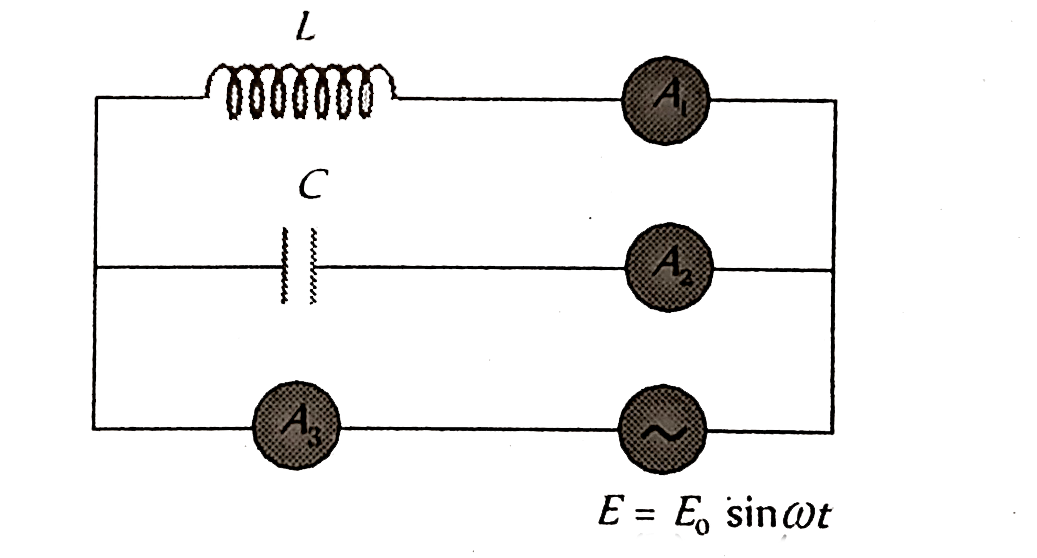In a series R-L-C circuit, the frequency of the source is half of the resonance frequency. The nature of the circuit will be
capacitive
inductive
purely resistive
data unsufficient
The correct Answer is:A
To determine the nature of a series R-L-C circuit when the frequency of the source is half of the resonance frequency, we can follow these steps:
1. Identify the Resonance Frequency:
The resonance frequency f0 of a series R-L-C circuit is given by the formula:
f0=12π√LC
2. Determine the Source Frequency:
Since the frequency of the source f is half of the resonance frequency, we can express it as:
f=f02=14π√LC
3. Compare Source Frequency with Resonance Frequency:
We know that:
f<f0
This indicates that the source frequency is less than the resonance frequency.
4. Calculate Reactance:
The inductive reactance XL and capacitive reactance XC can be expressed as:
XL=ωLandXC=1ωC
where ω=2πf.
5. Substitute the Source Frequency:
Since f<f0, we can substitute ω as:
ω=2πf<2πf0
Therefore, we can say:
ωL<1ωC
6. Rearranging the Inequality:
This can be rearranged to show:
XL<XC
This means that the capacitive reactance XC is greater than the inductive reactance XL.
7. Determine the Nature of the Circuit:
Since XC>XL, the circuit behaves in a capacitive manner. Therefore, the nature of the circuit is capacitive.
Conclusion:
The nature of the circuit when the frequency of the source is half of the resonance frequency is capacitive.
The resonance frequency f0 of a series R-L-C circuit is given by the formula:
f0=12π√LC
Since the frequency of the source f is half of the resonance frequency, we can express it as:
f=f02=14π√LC
We know that:
f<f0
This indicates that the source frequency is less than the resonance frequency.
The inductive reactance XL and capacitive reactance XC can be expressed as:
XL=ωLandXC=1ωC
where ω=2πf.
Since f<f0, we can substitute ω as:
ω=2πf<2πf0
Therefore, we can say:
ωL<1ωC
This can be rearranged to show:
XL<XC
This means that the capacitive reactance XC is greater than the inductive reactance XL.
Since XC>XL, the circuit behaves in a capacitive manner. Therefore, the nature of the circuit is capacitive.
The nature of the circuit when the frequency of the source is half of the resonance frequency is capacitive.
Similar Questions
Knowledge Check
- Question 1 - Select One
In a series LCR circuit, at resonant frequency.
Athe impedance and the current are maximumBthe impedance is maximumCthe current and voltage are maximumDthe current and voltage are minimum - Question 2 - Select One
An alternating e.m.f. is applied to a series L-C-R circuit. If the frequency of the applied e.m.f. is more than the resonant frequency of the circuit then the circuit will act as
Aa resistive circuitBan indcutive circuitCa capacitive circuitDan oscillatory circuit - Question 3 - Select One
In resonant circuit, at resonant frequency
AXL=XCBZ=RCXL>XCDboth 'a' and 'b'
For a series L C R circuit, the power loss at resonance is
View SolutionIn a series L-C-R circuit shown in the figure , what is the resonance frequency and the current at the resonating frequency?
View SolutionAt resonance frequency the impedance in series LCR circuit is
View SolutionAn inductor L and a capacitor C are connected in the circuit as shown in the figure. The frequency of the power supply is equal to the resonant frequency of the circuit. Which ammeter will read zero ampere
 View Solution
View SolutionIn a R, L, C circult, three elements is connected in series by an ac source. If frequency is less than resonating frequency then net impedance of the circuit will be
View Solution

